The automotive market is constantly evolving, with new entrants and innovations emerging regularly. In the segment of high-roof vans, the Ford Tourneo Connect and VW Caddy stand out as two highly competitive options. Both vehicles combine practicality with advanced features, making them ideal choices for families and businesses alike. In this comparison, we will delve into their technical aspects, innovations, and what sets them apart.
Ford Tourneo Connect vs VW Caddy – Differences & prices compared
Two cars, one duel: Ford Tourneo Connect meets VW Caddy.
Which one wins in performance, efficiency and value for money? Find out now!
Overview and Design
The Ford Tourneo Connect and VW Caddy both feature high-roof wagon designs that emphasize spaciousness and flexibility. The Tourneo Connect measures 4853 mm in length and boasts a height of 1833 mm, making it a slightly larger option compared to the Caddy, which has a length of 4500 mm and a height that can reach up to 1860 mm in certain trims. The width for both vehicles stands at 1855 mm, ensuring a solid road presence.
Powertrains and Performance
When it comes to engines, both models offer a range of petrol and diesel options, including plug-in hybrid variants. The Ford Tourneo Connect ranges from 102 HP to 150 HP, with different engine capacities available (1498 cm3 and 1968 cm3). It also offers multiple transmission choices, including automatic and manual options, with claimed fuel consumption figures as low as 5.4 L/100km for the most efficient diesel variants.
On the flip side, the VW Caddy matches this performance with a similar power range, achieving a maximum of 150 HP and comparable engine capacities. The Caddy demonstrates slightly better fuel efficiency with some models achieving figures as low as 5.3 L/100km. Additionally, it offers both front-wheel drive and all-wheel drive options, providing enhanced versatility for various driving conditions.
Acceleration and Top Speed
In terms of performance metrics, both vehicles are competitive. The Ford Tourneo Connect can accelerate from 0-100 km/h in as little as 11.4 seconds for its most powerful variant. The Caddy provides competitive performance as well, with equivalent acceleration times. The Ford tops out at around 181 km/h, while the Caddy is slightly more impressive at 182 km/h.
Interior Space and Cargo Capacity
Another crucial area where both vehicles excel is in interior space. The Ford Tourneo Connect offers a maximum trunk capacity of 1720 liters, making it well-suited for transporting large items. In contrast, the VW Caddy provides slightly less trunk volume but compensates with the option for a seven-seat layout, ideal for larger families or groups.
Innovative Features
Both the Tourneo Connect and Caddy come equipped with modern technology that enhances the driving experience. The Ford model features advanced safety systems including standard lane-keeping assist and adaptive cruise control. It also offers an infotainment system with a user-friendly interface and smartphone connectivity options like Apple CarPlay and Android Auto.
The VW Caddy, on the other hand, impresses with its digital cockpit which includes a fully customizable digital display. Safety and driver assistance are also paramount, with features such as automatic braking and blind-spot monitoring. The Caddy's intuitive infotainment system further links seamlessly with mobile devices for an enhanced driving experience.
Conclusion
Both the Ford Tourneo Connect and VW Caddy have carved a niche for themselves in the high-roof wagon segment. With robust performance, spacious interiors, and cutting-edge technologies, they cater to a wide range of consumer needs. Ultimately, the choice may come down to personal preference regarding brand loyalty, specific features, and tailored usage requirements. Whether you prioritize more passenger space or advanced technological interfaces, both options deliver solid performance and practicality, making them worthy contenders in their category.
Here’s where it gets real: The technical differences in detail
Costs and Efficiency:
When it comes to price and running costs, the biggest differences usually appear. This is often where you see which car fits your budget better in the long run.
Ford Tourneo Connect has a slight advantage in terms of price – it starts at 27300 £, while the VW Caddy costs 27800 £. That’s a price difference of around 417 £.
Both cars consume an average of 0.50 L per 100 km – no difference here.
As for range, the VW Caddy performs hardly perceptible better – achieving up to 121 km, about 2 km more than the Ford Tourneo Connect.
Engine and Performance:
Under the bonnet, it becomes clear which model is tuned for sportiness and which one takes the lead when you hit the accelerator.
Both models deliver identical power – 150 HP each.
In acceleration from 0 to 100 km/h, the Ford Tourneo Connect is somewhat quicker – completing the sprint in 10.10 s, while the VW Caddy takes 11.40 s. That’s about 1.30 s faster.
There’s no difference in top speed – both reach 186 km/h.
There’s also a difference in torque: Ford Tourneo Connect pulls hardly perceptible stronger with 350 Nm compared to 320 Nm. That’s about 30 Nm difference.
Space and Everyday Use:
Beyond pure performance, interior space and usability matter most in daily life. This is where you see which car is more practical and versatile.
Seats: VW Caddy offers distinct more seating capacity – 7 vs 5.
In curb weight, Ford Tourneo Connect is barely noticeable lighter – 1542 kg compared to 1575 kg. The difference is around 33 kg.
In maximum load capacity, the VW Caddy performs to a small extent better – up to 3700 L, which is about 595 L more than the Ford Tourneo Connect.
When it comes to payload, Ford Tourneo Connect to a small extent takes the win – 818 kg compared to 710 kg. That’s a difference of about 108 kg.
Who comes out on top?
Overall, the VW Caddy shows itself to be won narrowly and secures the title of DriveDuel Champion.
It convinces with the more balanced overall package and proves to be the more versatile choice for everyday use.
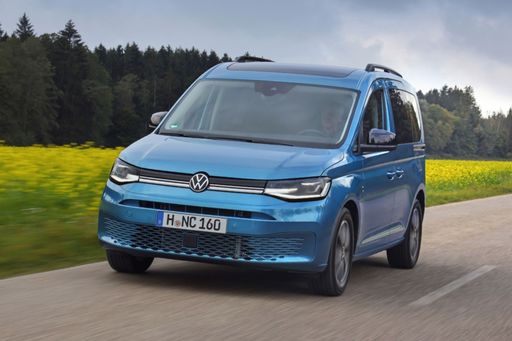 @ Volkswagen AG / VW Media
@ Volkswagen AG / VW Media
VW Caddy
Ford Tourneo Connect
The Ford Tourneo Connect represents a versatile option in the people carrier segment, offering a blend of functionality and comfort for family or business use. Its design combines modern aesthetics with the practicality needed for daily operations, making it an appealing choice for those seeking a reliable and adaptable vehicle. Inside, the Tourneo Connect provides a spacious and well-thought-out interior, ensuring a comfortable driving experience for both driver and passengers.
details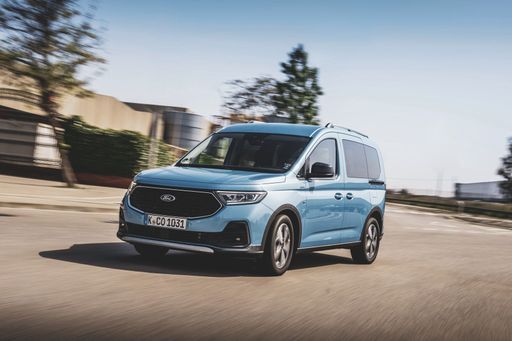 @ Ford Motor Company / Ford Media Center
@ Ford Motor Company / Ford Media Center
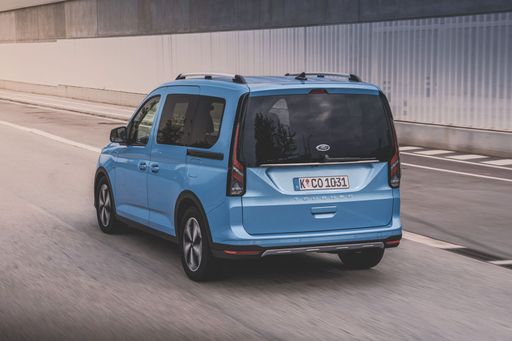 @ Ford Motor Company / Ford Media Center
@ Ford Motor Company / Ford Media Center
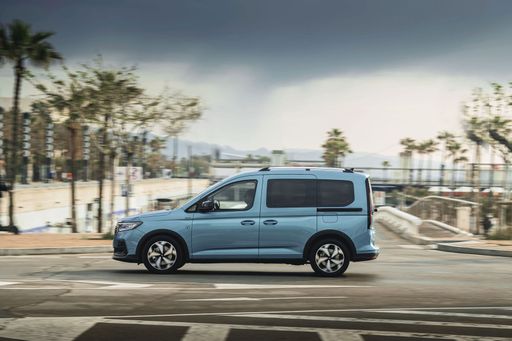 @ Ford Motor Company / Ford Media Center
@ Ford Motor Company / Ford Media Center
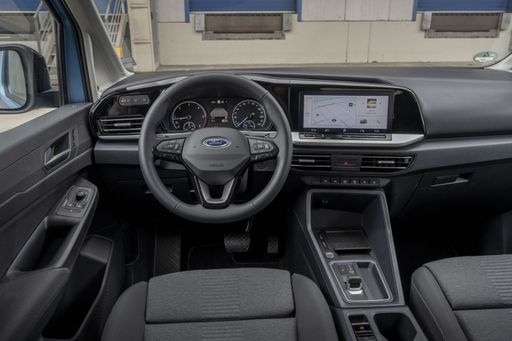 @ Ford Motor Company / Ford Media Center
@ Ford Motor Company / Ford Media Center
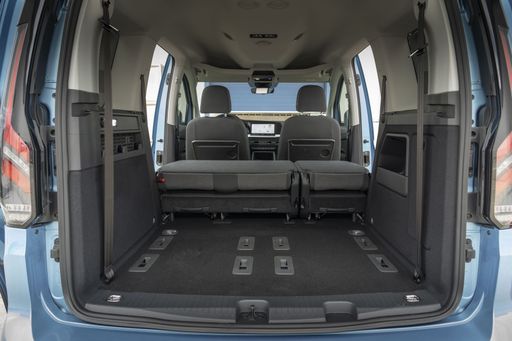 @ Ford Motor Company / Ford Media Center
@ Ford Motor Company / Ford Media Center
VW Caddy
The VW Caddy is the Swiss-army knife of compact vans — practical, surprisingly refined, and ready to swap a weekend adventure for a grocery run without breaking a sweat. It’s user-friendly, comfortable enough for daily driving, and sensible for buyers who want utility with a dash of style and no drama.
details @ Volkswagen AG / VW Media
@ Volkswagen AG / VW Media
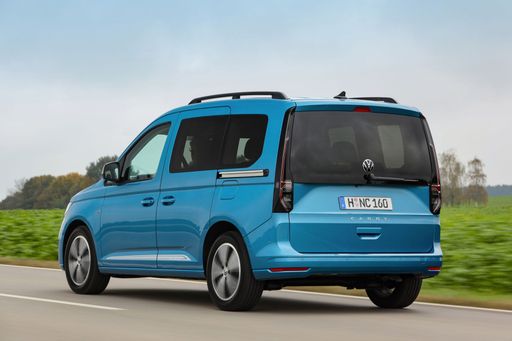 @ Volkswagen AG / VW Media
@ Volkswagen AG / VW Media
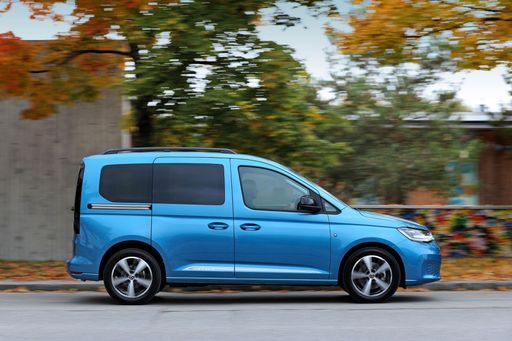 @ Volkswagen AG / VW Media
@ Volkswagen AG / VW Media
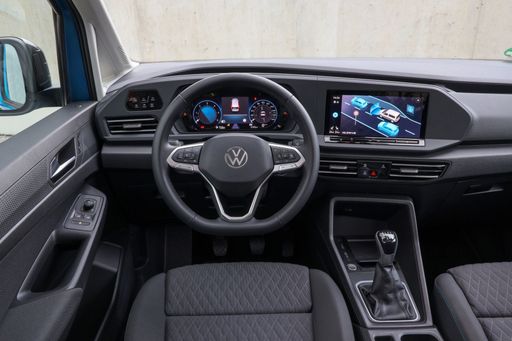 @ Volkswagen AG / VW Media
@ Volkswagen AG / VW Media
 @ Ford Motor Company / Ford Media Center
@ Ford Motor Company / Ford Media Center
|
 @ Volkswagen AG / VW Media
@ Volkswagen AG / VW Media
|
|
|
|
Costs and Consumption |
|
|---|---|
|
Price
27300 - 41900 £
|
Price
27800 - 45900 £
|
|
Consumption L/100km
0.5 - 6.9 L
|
Consumption L/100km
0.5 - 6.9 L
|
|
Consumption kWh/100km
-
|
Consumption kWh/100km
-
|
|
Electric Range
116 - 119 km
|
Electric Range
116 - 121 km
|
|
Battery Capacity
19.70 kWh
|
Battery Capacity
19.70 kWh
|
|
co2
11 - 164 g/km
|
co2
10 - 165 g/km
|
|
Fuel tank capacity
32 - 50 L
|
Fuel tank capacity
50 L
|
Dimensions and Body |
|
|---|---|
|
Body Type
High Roof Estate
|
Body Type
High Roof Estate
|
|
Seats
5
|
Seats
5 - 7
|
|
Doors
5
|
Doors
5
|
|
Curb weight
1542 - 1781 kg
|
Curb weight
1575 - 1998 kg
|
|
Trunk capacity
1213 - 1720 L
|
Trunk capacity
-
|
|
Length
4500 - 4868 mm
|
Length
4500 - 4853 mm
|
|
Width
1855 mm
|
Width
1855 mm
|
|
Height
1833 mm
|
Height
1819 - 1860 mm
|
|
Max trunk capacity
2556 - 3105 L
|
Max trunk capacity
2556 - 3700 L
|
|
Payload
563 - 818 kg
|
Payload
501 - 710 kg
|
Engine and Performance |
|
|---|---|
|
Engine Type
Plugin Hybrid, Petrol, Diesel
|
Engine Type
Petrol, Diesel, Plugin Hybrid
|
|
Transmission
Automatic, Manuel
|
Transmission
Manuel, Automatic
|
|
Transmission Detail
Dual-Clutch Automatic, Manual Gearbox
|
Transmission Detail
Manual Gearbox, Dual-Clutch Automatic
|
|
Drive Type
Front-Wheel Drive, All-Wheel Drive
|
Drive Type
Front-Wheel Drive, All-Wheel Drive
|
|
Power HP
102 - 150 HP
|
Power HP
102 - 150 HP
|
|
Acceleration 0-100km/h
10.1 - 13.5 s
|
Acceleration 0-100km/h
11.4 - 14 s
|
|
Max Speed
175 - 186 km/h
|
Max Speed
173 - 186 km/h
|
|
Torque
220 - 350 Nm
|
Torque
220 - 320 Nm
|
|
Number of Cylinders
4
|
Number of Cylinders
4
|
|
Power kW
75 - 110 kW
|
Power kW
75 - 110 kW
|
|
Engine capacity
1498 - 1968 cm3
|
Engine capacity
1498 - 1968 cm3
|
General |
|
|---|---|
|
Model Year
2024 - 2025
|
Model Year
2024
|
|
CO2 Efficiency Class
B, E, F
|
CO2 Efficiency Class
E, F, B
|
|
Brand
Ford
|
Brand
VW
|
Is the Ford Tourneo Connect offered with different drivetrains?
Available configurations include Front-Wheel Drive or All-Wheel Drive.
The prices and data displayed are estimates based on German list prices and may vary by country. This information is not legally binding.
